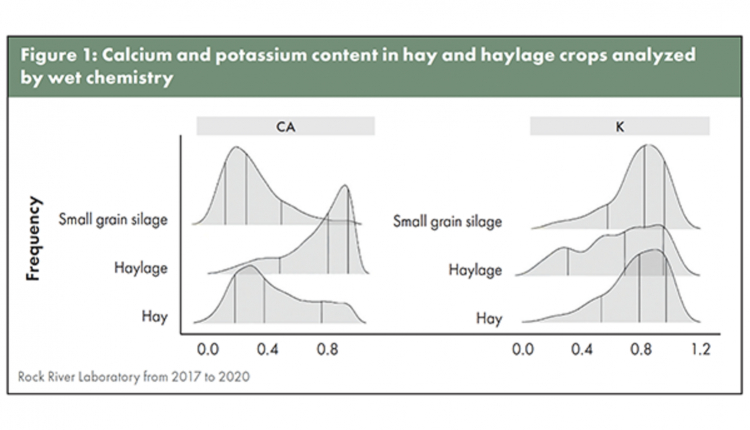The author is the director of nutrition research and innovation with Rock River Lab Inc, and adjunct assistant professor, University of Wisconsin-Madison’s Dairy Science Department.
Mining for precious metals or diamonds requires tried and true equipment and techniques. Simply walking around aimlessly with a metal detector or sifting the dirt won’t often prove successful. Instead, miners use experience and science-backed techniques and equipment for uncovering precious materials.
Determining the mineral content in forages is very similar. The right equipment and techniques must be used in a forage and feed analysis laboratory to reliably determine the true mineral content.
Grasses and legumes are adept at absorbing minerals from the soil, assuming the growing environment and soil contains both adequate moisture and plant-available minerals in the root zone. For multi-cut forages like alfalfa, sorghum, or grass, we take advantage of this biological phenomena for nutrient management and planning purposes.
Forage mineral content varies substantially. As an example, Figure 1 details the concentrations of calcium and potassium for hay and haylage crops over the past five years in samples analyzed by Rock River Laboratory. The range in forage content with these minerals spans from near zero to almost 1% of dry matter. If these forage minerals are to provide value in dairy and beef diets, their content must be accounted for accurately. Macro- and trace minerals in forages are measured in concentrations of parts per hundred to parts per million (ppm). Parts per hundred is another way to express the percent of dry matter.

Most nutritionists are concerned with the macro-mineral concentrations for beef nutrition and dry cow, prefresh, or lactating dairy cattle diet formulation and mineral balancing purposes. The trace mineral content in forages is less understood but warrants further exploration and discussion in the future.
Go wet or go home
Coming back to macro-mineral measures, accurately determining forage mineral concentration is no simple task. Routine forage analysis is conducted using near infrared reflectance spectroscopy (NIRS) technology. This technology is utilized in many different industries, including the pharmaceutical and other industries that rely upon organic compound measurements in samples. In agriculture, John Shenk Sr. adapted this technology and demonstrated that NIRS can accurately and reliably measure organic compounds like protein, fiber, and starch.
While NIRS technology is fantastic for routine, rapid, and low-cost nutrient analyses, the technology comes with limits. Inorganic compounds such as minerals and metals are not directly measured by NIRS. Instead, these compounds are more reliably measured with wet chemistry techniques and equipment. This is just like the case for needing the right techniques and equipment to mine for gold or silver.
Detecting minerals in forages requires equipment and methods that directly identify the individual minerals. There are numerous wet chemistry techniques to separate and identify forage minerals, ranging from an inductively coupled plasma (ICP) technique to an X-ray instrument-based approach. In both cases, the minerals are assessed directly, and the resulting measures are robust.
In past years, these instruments and techniques required several additional days for laboratory technicians to complete the analyses. However, thanks to technology and technique advancements, the turnaround time has dramatically improved to the point that wet chemistry mineral measures can be made in nearly the same amount of time as the routine and rapid NIRS-based measures.
Commercial forage analysis laboratories have developed NIRS-based models to predict the mineral content. These measures are helpful to gain a general understanding of the forage mineral concentration; however, they are merely directional in terms of accuracy, much like a compass points you in a general direction. Wet chemistry easily gives us the most precise and accurate answer.
I recommend NIRS mineral measures for day-to-day monitoring and to identify substantial changes. Use wet chemistry mineral measures with forages prior to making supplementation decisions in your dairy or beef diets to avoid a costly mistake.
In precious mineral or metal mining, miners use advanced techniques and technology to their advantage to efficiently and more accurately find valuable compounds. Determining forage mineral concentration for diet balancing purposes can be thought of in the same way. The right instruments and technology should be applied at the forage laboratory to get the right answer and efficiently build your ration’s mineral supplementation around those minerals contributed by your forages.
This article appeared in the March 2022 issue of Hay & Forage Grower on page 17.
Not a subscriber? Click to get the print magazine.
